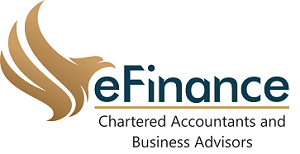Navigating the financial landscape for your business can be daunting, especially when traditional loans seem out of reach. Revenue based business loans offer a flexible alternative, allowing you to secure funding based on your company’s revenue rather than your credit score or collateral. This type of financing can be a game-changer, especially for small to medium-sized enterprises looking to scale without the burden of rigid repayment schedules.
Imagine accessing the capital you need to grow, with repayments that ebb and flow with your business’s performance. Revenue based loans provide just that, aligning your financial obligations with your actual income. If you’ve been searching for a way to fund your business without the constraints of conventional loans, it’s time to explore how revenue based financing could be the perfect fit for your needs.
Understanding Revenue Based Business Loans
Revenue based business loans offer a flexible funding solution for companies, especially when traditional loans aren’t an option. Discover more about these innovative financial instruments below.
What Are Revenue Based Business Loans?
Revenue based business loans allow you to borrow money based on your company’s monthly revenue. Lenders provide funds upfront and take a percentage of your future sales as repayment. Think of it as connecting your loan repayments with your business performance. If your revenue fluctuates, your repayments adjust accordingly, making these loans adaptable and less risky than fixed payment loans.
How Do They Differ From Traditional Loans?
Traditional loans often require high credit scores and collateral. You might feel like you’re jumping through hoops just to get approval. Revenue based loans don’t fuss over credit scores or collateral – they focus on your revenue. If your business has steady sales, you can qualify.
Repayments for traditional loans stay constant regardless of your monthly revenue. This can strain your finances during slow periods. With revenue based loans, repayments rise and fall with your sales. Made a lot of sales this month? Repay more. Had a quieter month? Pay less. This flexibility helps manage cash flow more effectively.
Unsecured business loans add another layer of flexibility, as they don’t require collateral but may still have rigid payment structures. Revenue based loans, however, take into account your actual performance. This makes them a game-changer for growing businesses needing scalable funding solutions without stringent conditions.
Curious how this could work for your business? Consider how your current cash flow would handle traditional loan repayments versus a dynamic, performance-linked repayment model. Reflecting on these differences can help in choosing the right funding option for your unique needs.
Benefits of Revenue Based Financing
Revenue based financing offers several advantages for businesses aiming to scale without traditional loan constraints.
Flexibility in Repayment
Enjoy dynamic repayment schedules with revenue based financing. Payments align with your monthly sales, so if business is booming, repayments increase. If sales dip, payments decrease. This flexibility supports cash flow management, ensuring you only pay what you can afford each month. Unlike rigid traditional loans, this model adapts to your business performance. Ever thought about a loan that understands your fluctuating revenue? Now you have one.
Less Emphasis on Credit Scores
Revenue based loans don’t concentrate on credit scores. Instead, your revenue matters more. This is a game-changer for businesses with less-than-perfect credit histories. Traditional loans often leave you jumping through hoops to secure funding, but with revenue based financing, the focus shifts from credit worthiness to business vitality. Wondering if your credit score might be a barrier? With revenue based loans, it’s not the main factor. This makes them similar to unsecured business loans, where collateral also isn’t required.
Eligibility and Application Process
Revenue based business loans offer a flexible approach without the hassle of traditional credit checks. Curious if you qualify? Wondering how to apply? Here’s a breakdown to get you started.
Who Qualifies for These Loans?
Revenue based loans cater to businesses with consistent revenue streams. Typically, lenders look for:
- Revenue Threshold: Your business should show a minimum monthly revenue, often around £10,000. This ensures you can manage repayments.
- Operational History: A track record of at least 6 months helps demonstrate business stability.
- Industry Type: Certain sectors are more attractive to lenders. For example, retail, SaaS, and hospitality industries often find it easier to secure these loans compared to high-risk sectors.
These criteria are more flexible than those for unsecured business loans, making revenue based options accessible to a broader range of businesses.
Steps to Apply for a Revenue Based Loan
Applying for a revenue based loan is simpler than you’d think. Ready to get started? Follow these steps:
- Gather Financial Documents: Collect your business bank statements and revenue reports. Lenders need these to assess your revenue patterns.
- Complete an Application Form: Fill out the lender’s application form, providing details about your business and its revenue.
- Submit Financial Information: Provide your gathered financial documents along with the application. This often includes 3 to 6 months of bank statements.
- Receive an Offer: If you meet the criteria, you’ll receive a loan offer. This outlines the loan amount and repayment terms.
- Agree and Fund: Upon accepting the terms, the funds are typically deposited into your business account within a few days.
How confident are you in your eligibility? If your business shows steady revenue and fits within these steps, you’re on the path to securing a loan that scales with your success.
Challenges and Considerations
When considering revenue based business loans, it’s crucial to understand the potential drawbacks and when this financing option might not be the best fit. Let’s dive into these aspects.
Potential Drawbacks
One challenge of revenue based business loans is that repayments can become unpredictable. As repayments link directly to revenue, during periods of lower sales, your repayment amounts decrease, prolonging the loan term. This can impact financial planning.
Another issue is that the cost of financing may be higher compared to traditional loans. Revenue based loans often carry higher fees due to the increased risk for lenders. For instance, interest rates and total repayment amounts can exceed those of conventional unsecured business loans.
There’s also the potential for cash flow strains. Although repayments scale with revenue, consistent drops in income can create cash flow problems that affect other operational expenses.
When Not to Choose Revenue Based Financing
Certain situations don’t suit revenue based financing. If your business has highly seasonal revenue with long periods of low income, the variable repayment structure might lead to prolonged debt cycles and financial stress.
Also, if you’re in an industry with unpredictable revenue patterns, such as event planning, a fixed-term loan might offer more stability.
Moreover, if your business prefers set financial obligations, then opting for a traditional loan might be more suitable. Having predictable repayment amounts helps with effective budgeting and avoids surprises.
Considering these factors, assess your business’s financial health and revenue patterns. This careful evaluation ensures that you make informed choices, aligning financing options with your business goals.
To Conclude
Revenue based business loans provide a flexible alternative to traditional financing methods by aligning repayments with your business’s performance. They can be particularly beneficial for small to medium-sized enterprises looking to scale without the constraints of rigid repayment schedules. However it’s crucial to weigh the potential drawbacks such as unpredictable repayments and higher financing costs against your business’s financial health and revenue patterns. By thoroughly assessing these factors you’ll be better positioned to choose the financing option that aligns with your business goals and ensures sustainable growth






